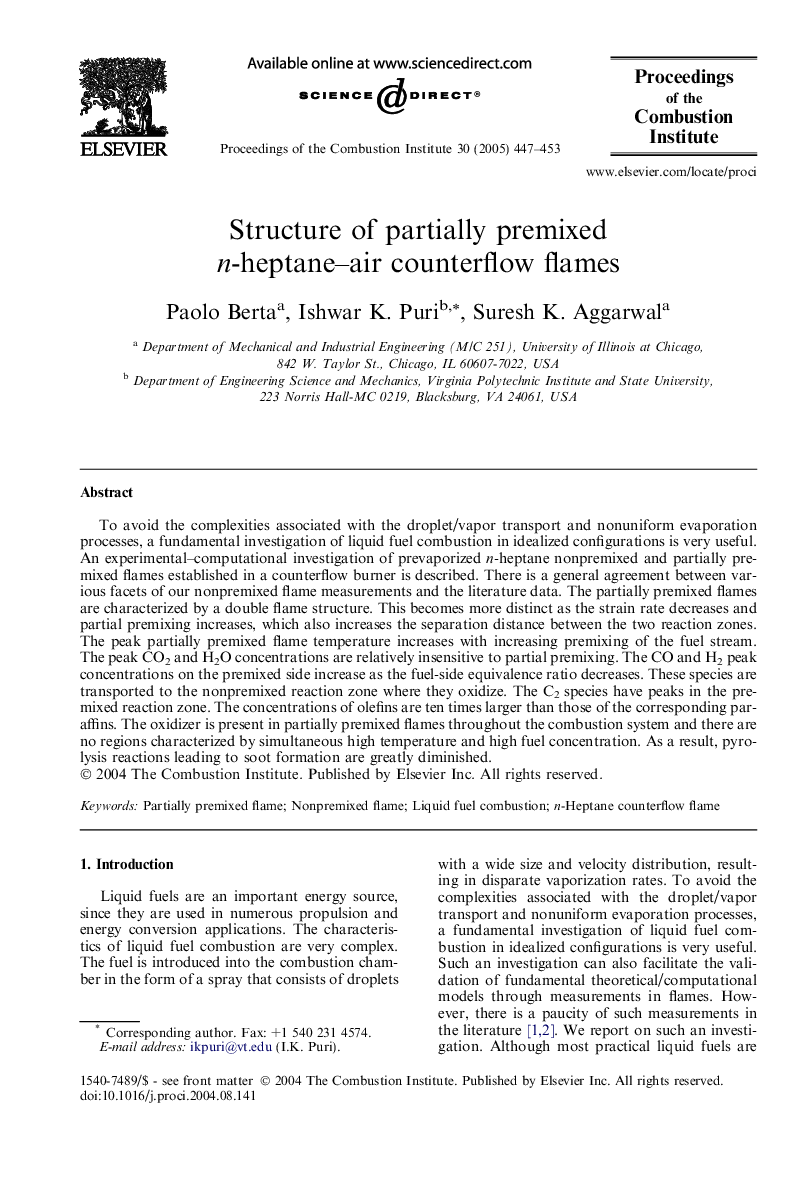| Article ID | Journal | Published Year | Pages | File Type |
|---|---|---|---|---|
| 9637365 | Proceedings of the Combustion Institute | 2005 | 7 Pages |
Abstract
To avoid the complexities associated with the droplet/vapor transport and nonuniform evaporation processes, a fundamental investigation of liquid fuel combustion in idealized configurations is very useful. An experimental-computational investigation of prevaporized n-heptane nonpremixed and partially premixed flames established in a counterflow burner is described. There is a general agreement between various facets of our nonpremixed flame measurements and the literature data. The partially premixed flames are characterized by a double flame structure. This becomes more distinct as the strain rate decreases and partial premixing increases, which also increases the separation distance between the two reaction zones. The peak partially premixed flame temperature increases with increasing premixing of the fuel stream. The peak CO2 and H2O concentrations are relatively insensitive to partial premixing. The CO and H2 peak concentrations on the premixed side increase as the fuel-side equivalence ratio decreases. These species are transported to the nonpremixed reaction zone where they oxidize. The C2 species have peaks in the premixed reaction zone. The concentrations of olefins are ten times larger than those of the corresponding paraffins. The oxidizer is present in partially premixed flames throughout the combustion system and there are no regions characterized by simultaneous high temperature and high fuel concentration. As a result, pyrolysis reactions leading to soot formation are greatly diminished.
Related Topics
Physical Sciences and Engineering
Chemical Engineering
Chemical Engineering (General)
Authors
Paolo Berta, Ishwar K. Puri, Suresh K. Aggarwal,
